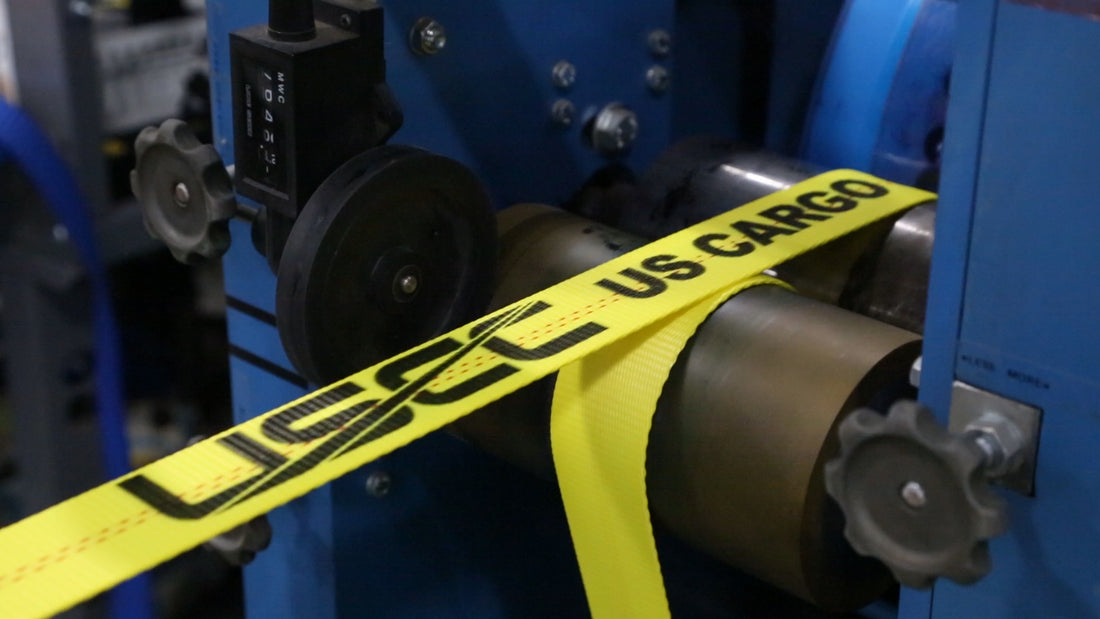
Using Tie Downs to Secure Cargo Loads Safely and Legally

During the 2017 CVSA International Roadcheck, improper cargo securement was the cause for 15.7% of vehicles being placed out of service.
Besides the risk of being placed out of service, there are a number of more serious consequences for improper cargo control securement, including citations and fines, damage to the vehicle, damage to the cargo, loss of the load, or even loss of life.
Taking the time to properly secure cargo loads using tie downs is always worth the time and effort. Read on to understand how tie downs should be used to ensure safe and legal cargo securement.
What is a tie down?
According to the Federal Motor Carrier Safety Administration (FMCSA), a tie down is a combination of securing devices (webbing, chain, rope, binders, shackles, D-rings, webbing ratchet, etc.) which forms an assembly that:
- Attaches cargo to, or restrains cargo on a vehicle.
- Is attached to an anchor point(s).
So, while we generally think of tie downs as just these:

The word tie down by itself (without “straps”) can technically mean many things.
Working load limit for tie downs

The working load limit (WLL) for a tie down is the lowest WLL of any of its parts or the WLL of the anchor points it is attached to, whichever is less. Every device contributes to the working load limit of the securement system.
Always use tie downs that are rated and clearly marked by their manufacturer. This not only gives you, the driver, peace of mind, it also makes it easy for shippers and inspectors to verify that you are using the proper equipment for the job.

How tie downs can be used to secure cargo
Tie downs are only safe and effective if they are properly secured to both the cargo and the vehicle. Take the time to ensure logical securement of your cargo to your vehicle.
There are two main ways tie downs can be used:

The first way is attached to the cargo.
a. Tie downs can be attached to the vehicle and then attached to the cargo.
b. Or, tie downs can be attached to the vehicle, passed through or around the cargo, and then attached to the vehicle again.

The second way is passed over the cargo.
a. Tie downs may also be attached to the vehicle, passed over the cargo, and then attached to the vehicle again.
Inspecting for proper cargo securement
Remember to periodically inspect your cargo during transit. It may seem like something that is always taking up your precious time, but just one loose strap can prove to be costly or even deadly.
Adjust cargo and load securement devices as necessary to ensure that cargo cannot shift or fall from the vehicle.
When is it time to get new tie-downs?
There are a few obvious signs that tell you it’s time to get new tie downs.
If your cargo control equipment shows any of the following, it’s time to invest in new tie downs.
- knots or obvious damage
- distress
- weakened parts
- weakened sections

Remember, all components of a tie down must be in proper working order. Keep an eye on the condition of your tie downs to avoid inspection penalties or loss of load.
Learn more about ratchet straps from our comprehensive guide to ratchet straps.
Time for new tie down equipment? Check out US Cargo Control for a huge selection of quality tie down equipment that is clearly rated and built to last.



